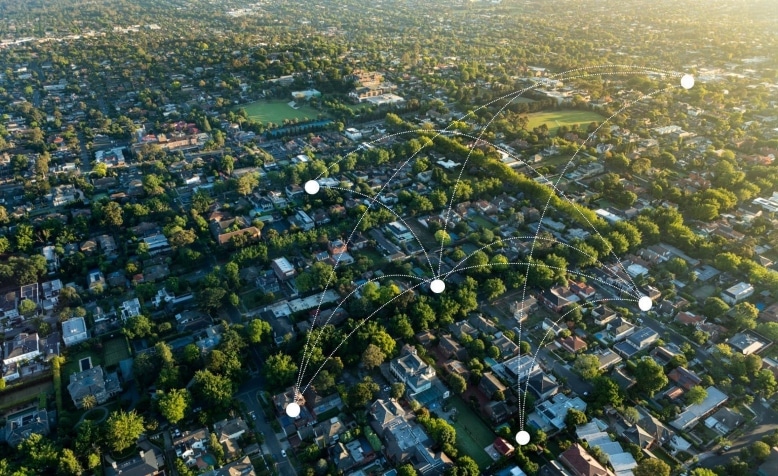Broadband Office Name: Office of the Chief Technology Officer – DC State Broadband and Digital Equity Office (SBDEO)
BEAD Award Amount: $100.7 M
District of Colombia Broadband Director: Kevin Hughes
Website: https://octo.dc.gov/
District of Colombia BEAD Program Tracker
| District | IP Vol 1 Approval | IP Vol 2 Approval | Challenge Process Submission Started | Challenge Process Final Determination Phase Completed | 1-Year Subgrantee Selection Process |
|---|---|---|---|---|---|
| District of Colombia | Yes | Yes | No | N/A | N/A |
District of Colombia BEAD Program Information

Key Updates
The DC State Broadband and Digital Equity Office (SBDEO) has not yet started its Challenge Process.
NTIA has recently approved SBDEO’s Initial Proposal Volume 2.
District of Colombia BEAD Program Plans & Maps
District of Colombia Five-Year Action Plan – N/A
District of Colombia BEAD Program Initial Proposal Volume 2: Overview
BEAD Long-Term Objectives
Mayor Muriel Bowser’s administration has outlined the following goals to guide DC’s State Broadband and Digital Equity Office (SBDEO):
Goal 1: Make High-Quality, Affordable, High-Speed Internet Accessible to All Residents of DC
- Ensure every Broadband Service Location (BSL) has 100/20 Mbps speeds with latency below 100 ms.
- Increase service availability to Community Anchor Institutions (CAIs).
- Achieve at least 95% broadband adoption among targeted populations and in Wards 5, 7, and 8.
- Ensure every household in DC is within range of an Internet Service Provider (ISP).
- Secure funding for the Affordable Connectivity Program (ACP).
Goal 2: Provide Sustainable, Low-Cost or No-Cost Devices, IT Support, and Enabling Applications to Residents
- Ensure all residents have access to internet-ready devices.
- Provide tech support for DC government-issued devices.
- Ensure residents are confident in using their devices.
Goal 3: Create Navigable Pathways for DC Residents Across the Spectrum of Digital Literacy and Digital Skills
- Improve digital literacy among residents.
- Enable residents to use technology for health, work, and education.
- Empower residents to utilize digital tools effectively.
District of Colombia BEAD Program Project Area Design
In DC, project areas are being designed based on the city’s wards. If there are any unserved or underserved locations in Wards 7 and 8, these areas will be combined into a single project area.
District of Colombia BEAD Program Extremely High Cost Threshold
Given DC’s unique geography, the deployment of end-to-end fiber is not expected to exceed the Threshold, as DC’s current unserved and underserved locations are already in close proximity to existing fiber assets. There is a possibility that no unserved or underserved locations outside Wards 7 and 8 will remain after the Challenge Process.
The definitive number of total investments required to achieve universal broadband access in DC will be finalized once BEAD applications have been submitted and the Challenge Process is complete.
BEAD Deployment Subgrantee Selection
SBDEO is asking for the following preregistration evidence from subgrantees and compliance with: Financial capability, managerial capability, operational capability, technical capability, ownership info, public funding info, compliance with laws, cybersecurity/supply chain compliance, and BABA/EHP/NEPA/NHPA compliance.
Primary Scoring Criteria for Priority Broadband Projects
- 30 pts – Minimal BEAD Outlay
- 25 pts – Affordability
- 20 pts – Fair Labor Practices
Secondary Scoring Criteria
- 10 pts – Speed to Deployment
- 5 pts – Open Access
- 5 pts – Local Support
- 5 pts – Past Performance
Secondary Scoring Criteria for Other Last-Mile Projects
- 10 pts – Speed to Deployment
- 6 pts – Speed of Network and Other Technical Capabilities
- 3 pts – Open Access
- 3 pts – Local Support
- 3 pts – Past Performance
BEAD Non-Deployment Subgrantee Selection
If a portion of DC’s BEAD allocation remains unspent, DC will identify potential non-deployment projects similar or identical to those enumerated by NTIA on pages 39 and 40 of the BEAD NOFO.
Preferences in selecting the type of initiative include:
- Transformative: Will the potential non-deployment project make a meaningful difference in the lives of DC residents?
- Equitable: Does the potential non-deployment project enhance equity for DC residents?
- Sustainable: Is the potential non-deployment project sustainable? Will it continue to show a return on investment in the mid to long term?
- Achievable: How likely is the potential non-deployment project to succeed in its transformative, equitable, and sustainable goals?
BEAD Eligible Entity Implementation
If significant BEAD grant funds remain after achieving universal service, DC is considering using these funds to support several digital equity initiatives that it would carry out directly. These initiatives could include:
- Acquiring special purpose community engagement resources to bring training and outreach efforts directly to the populations most in need.
- Improving online government service delivery to make interfacing with the DC government online less daunting and more accessible for residents.
- Upscaling existing digital equity programs, including workforce development programs like the DC Infrastructure Academy, to better prepare residents for careers in technology.
BEAD Local, Tribe, and Regional Broadband Planning Process
Unlike other states, DC operates simultaneously as both the state and local government and does not contain local governments. Additionally, the federal Bureau of Indian Affairs does not recognize Tribes or Tribal lands within the geographic boundaries of DC.
Regarding regional coordination, DC routinely collaborates with its sister states and adjacent counties.
BEAD Labor Standards & Protection
SBDEO requires all BEAD subgrantees to submit the following information:
A record of past compliance with federal/employment laws:
- Must address info on deployment projects within the last 3 years.
- Certification form from an Officer/Director level employee of past compliance.
- Written confirmation that subgrantee has disclosed any violations from contractors within the last 3 years.
- Discussion of workforce plan
Plans for ensuring compliance with federal/employment laws:
- How subgrantee will ensure compliance in its labor/employment practices.
- Info on applicable wage scales, wage, and overtime practices for each class of employee expected to be involved in physical construction of the network.
- How subgrantee will ensure implementation of workplace safety committees.
- Comply with the Prevailing Wages Act.
- Other items as outlined in the BEAD NOFO.
BEAD Minority Business Enterprises / Women’s Business Enterprises / Labor Surplus Area Firms Inclusion
SBDEO confirms it will take the necessary affirmative steps as outlined in the BEAD NOFO. Additionally, SBDEO will develop a system to track key metrics on the inclusion of underrepresented enterprises throughout the process, including recruitment, utilization, and retainment.
SBDEO will ensure applicants are aware of these expectations prior to and throughout the selection process by:
- Conducting information webinars.
- Posting a list of regulations and expectations on techtogether.dc.gov.
- Including the requirements in grant applications and instructions.
- Incorporating the requirements in grant agreement terms and conditions.
- Enforcing these expectations through the subrecipient grant monitoring program.
BEAD Cost & Barrier Reduction
1. Promoting the use of existing infrastructure.
2. Promoting and adapting dig-once policies.
3. Streamlining permitting processes.
4. Streamlining cost-effective access to poles, conduits, and easements.
5. Streamlining rights of way, including the imposition of reasonable access requirements.
BEAD Low-Cost Broadband Service Option
A low-cost service option must meet, at a minimum, the following criteria:
- The total price shall not exceed $30 per month.
- Allows the end user to apply to the Affordable Connectivity Program (ACP).
- Meets performance requirements as established by the BEAD program, offering speeds of 100/20 Mbps.
- Provides typical latency measurements of no more than 100 milliseconds.
- Is not subject to data caps, surcharges, or usage-based throttling.
- Permits Eligible Subscribers who are subscribed to a low-cost broadband service option to upgrade if the subgrantee later offers a low-cost plan with higher speeds.
BEAD Middle-Class Affordability
BEAD Proposal Scoring Criteria
Affordability will comprise 20% of the scoring criteria that SBDEO will use to evaluate proposals to serve a location under the BEAD program.
Recommended Service Plan
At a minimum, the recommended service plan must meet the following criteria:
- Costs $50 per month or less.
- Consistently and reliably provides download speeds of at least 100 Mbps and typical upload speeds of at least 20 Mbps.
- Provides typical latency measurements of no more than 100 milliseconds.
- Is not subject to data caps, surcharges, or usage-based throttling.

